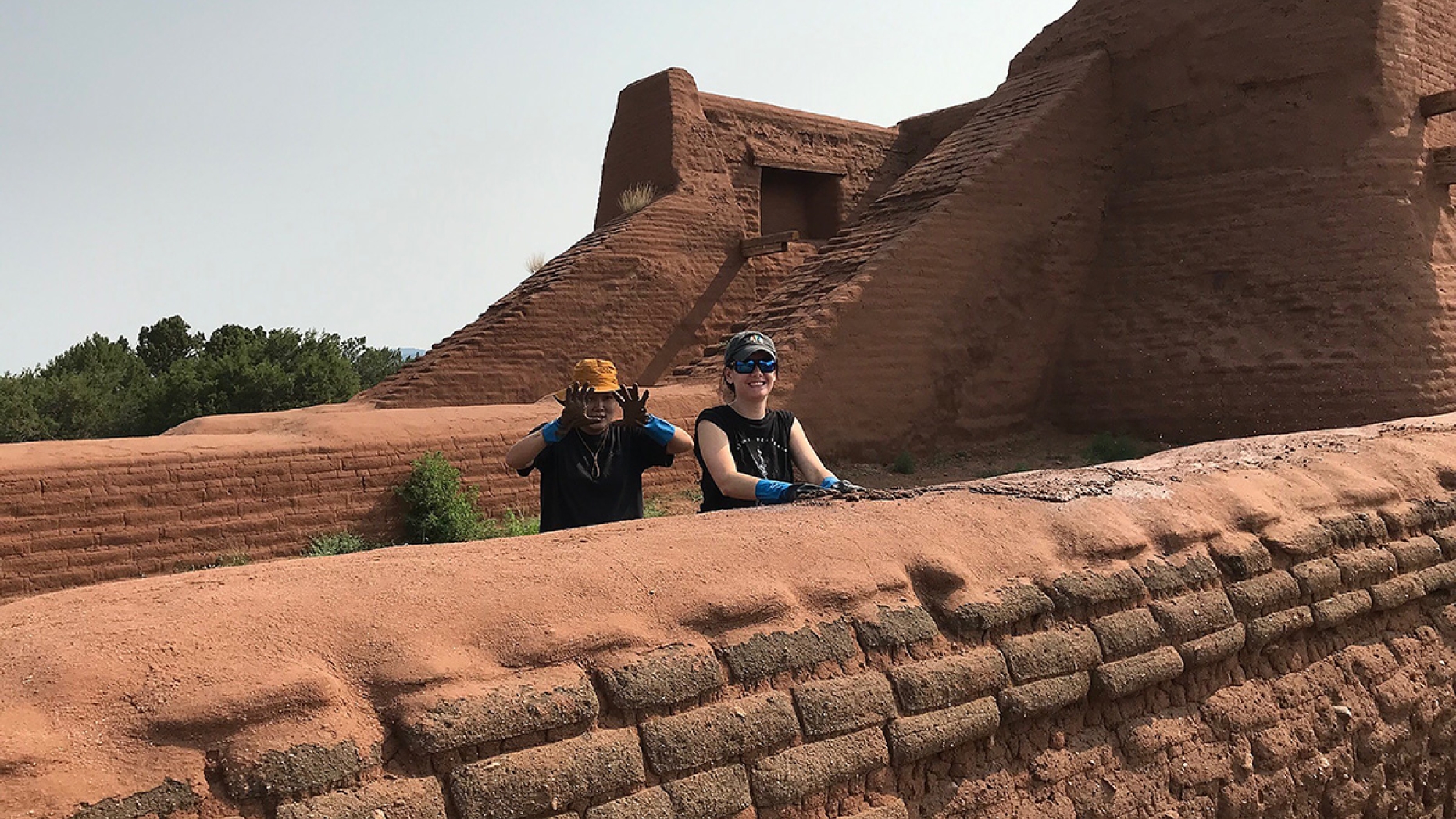Alison Cavicchio | Pecos National Historical Park and Taliesin

"The techniques I learned and knowledge I gained during my first year of classes were critical for both of my internships."
Stuart Weitzman School of Design
102 Meyerson Hall
210 South 34th Street
Philadelphia, PA 19104

"The techniques I learned and knowledge I gained during my first year of classes were critical for both of my internships."
This summer I worked as a Research Fellow for the Center for Architectural Conservation (CAC) at Pecos National Historical Park in New Mexico, and at Frank Lloyd Wright’s Taliesin in Spring Green, Wisconsin.
During my time on site at Pecos I worked on developing a methodology for monitoring the condition of the encapsulated historic adobe walls in the convento-church complex. Encapsulation is a method of protecting earthen architecture by creating a sacrificial veneer layer of new adobe bricks around the original adobe wall. The methodology for monitoring this type of wall system included creating rectified photos, conducting conditions assessments, and collecting and testing soil samples from the veneer of our pilot wall. The veneer of the pilot wall was then removed, after which we rectified photos and conducted conditions assessments of the exposed original wall. The goal of this work was to determine if there is a correlation between the conditions of the adobe veneers and the original walls. By monitoring veneer conditions through a rapid assessment survey, NPS will be able to better determine which encapsulated walls are most at risk and require a full conditions assessment. The methodology developed this summer will inform the Historic Preservation Guide for the park. Working with the NPS team at Pecos was an amazing opportunity to gain field experience and learn firsthand about the conservation of earthen archaeological sites.
At Taliesin, I worked on documentation and recording of the Midway Barn. Midway anchors Taliesin historically as a functional farm, and represents Wright’s visions of holistic living, including as a part of the Taliesin Fellowship. This was an incredible opportunity to experience Taliesin as Frank Lloyd Wright intended; fully immersed by living, working, and learning on site. I worked on terrestrial laser scanning of the interior and exterior of the barn ultimately used to create a three-dimensional model of the barn, HABS photography, and rectified photography to inform future conditions assessments. My favorite memory from Taliesin is climbing up into the iconic the milk tower.
The techniques I learned and knowledge I gained during my first year of classes, including Building Pathology, Conservation Science, Digital Media, Documentation and Recording, and Theories, were critical for both of my internships. This summer was an invaluable experience: I had the chance to work alongside Frank Matero, FLLW Foundation, and NPS staff in the field. I learned how to conduct conditions assessments, and use software and technology such as SketchUp, a total station, laser scanner, and a drone. I also honed my photography skills and strengthened my ability to create final products using Photoshop, AgiSoft, Recap, and AutoCAD. Thank you, CAC!